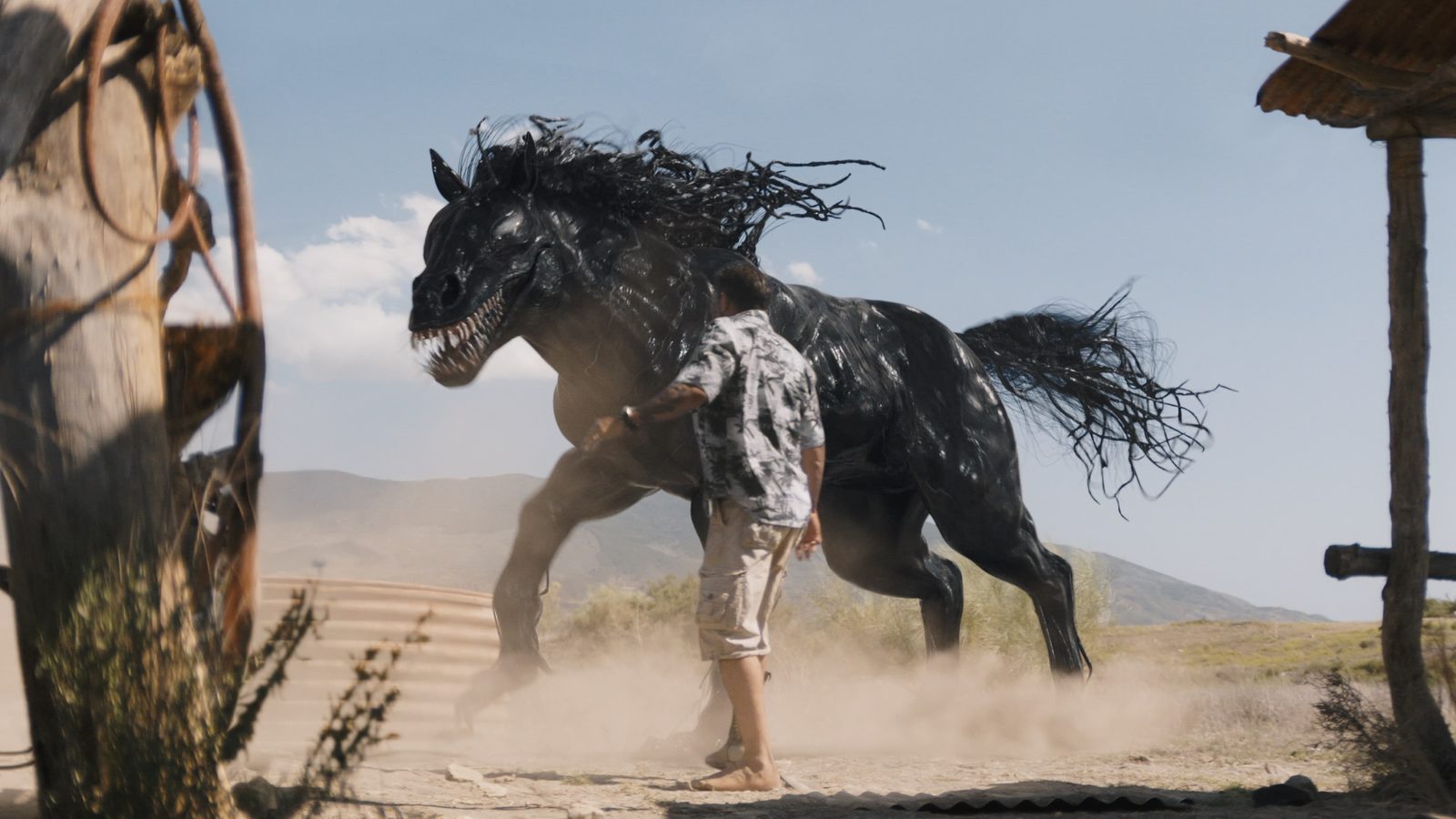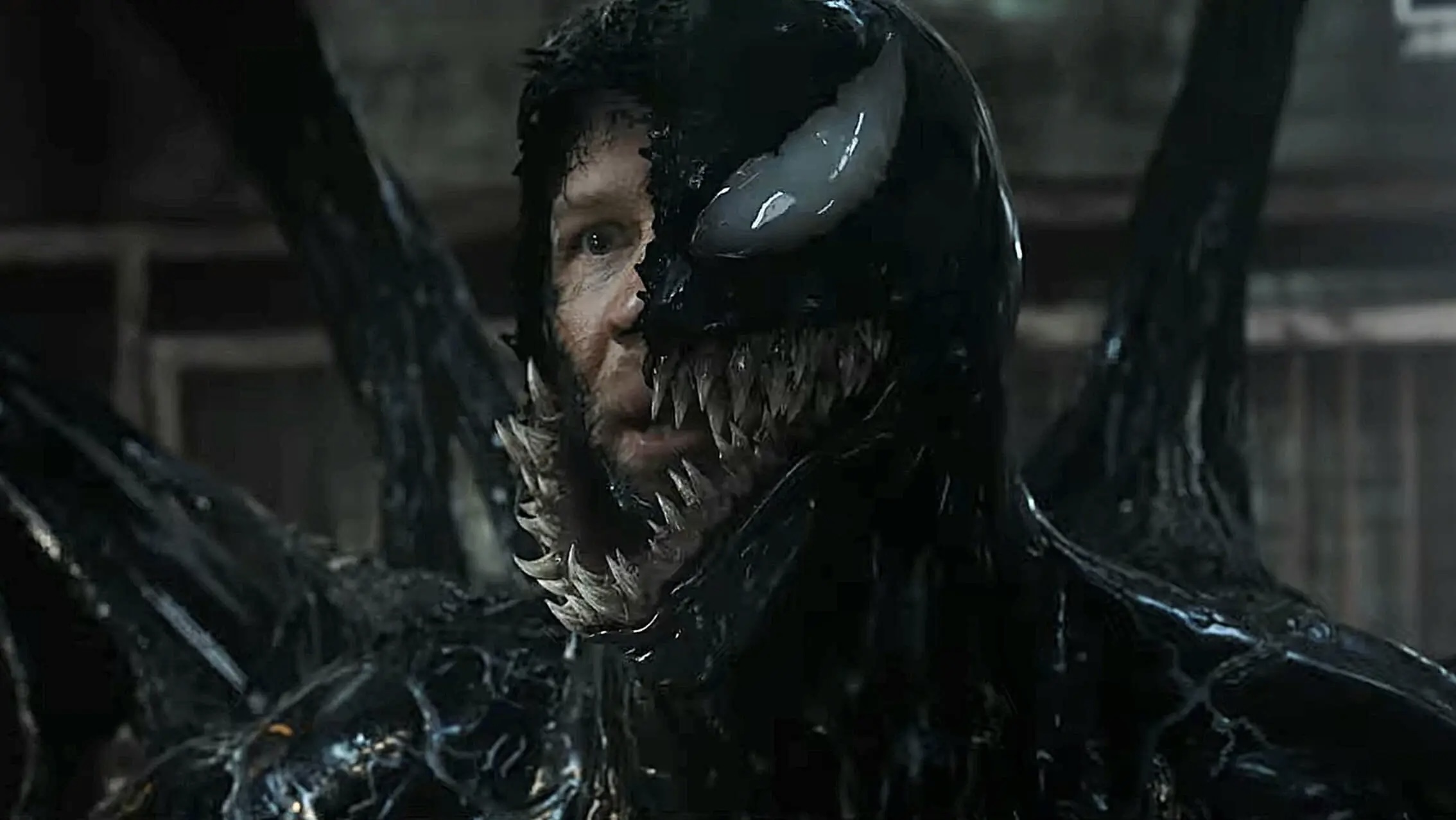This week, a new film was released worldwide, concluding the Venom trilogy – Venom: The Last Dance.
After two unusual and controversial parts, we gave Tom Hardy one last chance in his inseparable symbiote to become a normal film. The first film received poor reviews from critics, who noted it as chaotic and formulaic. At the same time, ordinary viewers liked the unusual mixture of comedy and action. The sequel received slightly better ratings than the first film for its improved pacing and greater emphasis on comedic elements.
We were counting on correcting the shortcomings in the third part, but we watched it and were disappointed. Everything is not so simple here, but spoiler alert – it hasn’t gotten any better.
Briefly
Now Venom is a mindless chaotic comedy
What is the film about?: Eddie and Venom are hiding from the authorities, but are faced with a new threat – the ancient cosmic evil Knull, the creator of all symbiotes, who seeks to get out of captivity and destroy all life.
In the first two films, audiences were attracted to the strange combination of comedic skirmishes and dark humor mixed with elements of horror and action. Hardy really puts on a fun parody of himself with his split personalities, where the Venom symbiote is a loud alien monster hungry for heads and destruction, and Eddie is the counterbalanced “down on his luck journalist” who doesn’t have much going for him in life.
This odd friendship made the comedic elements really shine, especially in the second half, where gags and jokes seemed like a natural part of their life together.
In the new film, the comedy component has faded: there are fewer jokes, and they give way to a “scientific” line and a dull antagonist who serves more as a harbinger of future events than an interesting villain.
The jokes are noticeably thinner and less successful as new plot elements come to the fore – ancient cosmic villains, symbiote research and threats of mass destruction. This moves the odd couple dynamic to the background, and instead of the enchanting duets, we see occasional scenes of them interacting.
In Venom, the humor was always based on the disagreements between Eddie and Venom: the symbiote constantly provokes Eddie into conflicts, persuades him to give free rein to alien aggression, and Eddie tries to control himself.

Funny moments included their bickering about food (especially Venom’s love of heads), random destruction, and character inconsistencies: Eddie is a down-on-his-luck and angsty journalist, and Venom is an aggressive alien with a violent temper and simple desires. A striking example was the scene in the restaurant where Venom forces Eddie to climb into a tank with lobsters and eat one of them – the scene looked funny and bright thanks to Hardy’s cool performance.
In the third part, the humor has undergone changes: there are noticeably fewer jokes and gags. While the core of the humor remains the same—Eddie and Venom’s “weird” relationship—the edge has been toned down, and many scenes feel less spontaneous. The comedic balance has shifted towards serious themes, and the jokes have become less inventive.
For example, the story introduces a “hippie family” that Eddie and Venom encounter while traveling. They try to be a comedic element, adding funny moments with their unusual attitude towards aliens and peculiar dialogues. But these scenes with them feel a bit drawn out and don’t add much to the overall story, rather acting as a distraction.
Surprisingly, there are few truly spectacular scenes here

With a considerable budget of $110 million, the film promised a cool spectacle, but the costs are almost justified. Too much clutter.
In the first installment, the special effects focused on Venom’s transformations: his organic movements, toothy smile and dark, slimy texture were the main visual attractions. Although the CGI looked crude, it blended with the chaotic atmosphere of the film, adding to Venom’s recognizable appearance.
In the sequel, the special effects became even more significant: the scenes with Carnage looked brighter, thanks to his red color and outlandish movements, and the fights between Venom and Carnage received more detail.
The new film has a larger scale, but there is an unpleasant nuance. For example, the appearance of an army of xenophages – huge alien creatures sent by Knull – looks more like digital chaos than spectacular combat. Visually, they add weight to the overall world of the symbiotes, but quickly get lost in a series of attacks and turn into blurry masses of pixels. Doubtful and not ok.
The climactic battle takes up a third of the running time and is replete with special effects, but it rather resembles digital chaos in which it is difficult to follow events.
The level of CGI action is over-saturated and the scenes feel jumbled, as if the creators were simply trying to fill the screen with animation. Unlike previous parts, where the visual elements were still in harmony with the narrative, here the special effects drown out the story itself.
Boring conflict scenario

The Last Dance’s script tries to bring drama by focusing on the ancient cosmic antagonist Knul and numerous subplots.
Unlike the first two parts, where the narrative was simpler and more built around the dynamics of Eddie and Venom, here the emphasis changes. Now the underground laboratory of Area 55, the research of Dr. Payne, the confrontation with the military commander Strickland are added, and Knull and his xenophage army seem to be behind it all, clearly paving the way for future films.
Because of this, the main conflict is lost and the film feels like a series of disjointed scenes that are simply thrown in for the sake of the story.
This “multi-layered” addition of antagonists and side characters makes the plot heavy and often boring, making it difficult to focus on anything specific.
Unlike the sequel, where the main antagonist felt like a threat and the confrontation had a more logical development, here Knull plays more of a background role than a real threat. He does not directly participate in the action, but only sends xenophages, which does not make him an interesting antagonist. As a result, instead of an impressive conclusion, the script feels vague and incoherent, and this is one of its most noticeable weaknesses.
Bottom line: a film for fans of the genre
Like Deadpool or Wolverine, the film pays tribute to self-awareness, understanding that it is only part of an entertaining comic book world. Venom’s humor and general lack of seriousness indicate an awareness of the absurdity of the concept, although it does not save the film from being sluggish.
The film consists of sometimes exciting, but often stupid Venom jokes, embedded in a formulaic and sometimes pointless sci-fi plot with a new antagonist, Knull.
Venom: The Last Dance is a film that, despite the stated conclusion of the trilogy, lacks the feeling of a finale. Instead of focusing on the development and closure of Eddie and Venom’s story, he sidesteps their relationship, framing everything with formulaic plot devices and adding unnecessary layers that only overload the structure.
The humor loses its impact, the script doesn’t offer anything new, and the special effects, while impressive in quantity, don’t elevate the film to the level of an exciting blockbuster.
The film will most likely appeal to those who are accustomed to the absurd atmosphere of the first two parts and just want to see another crazy adventure of Venom. Are others passing by? Yes.
Is there a post-credits scene? Yes too.
Source: www.iphones.ru


